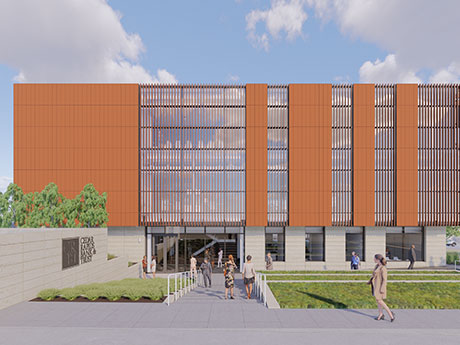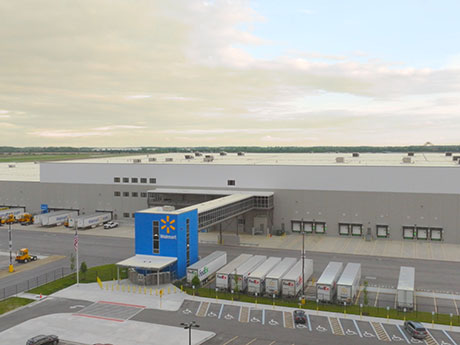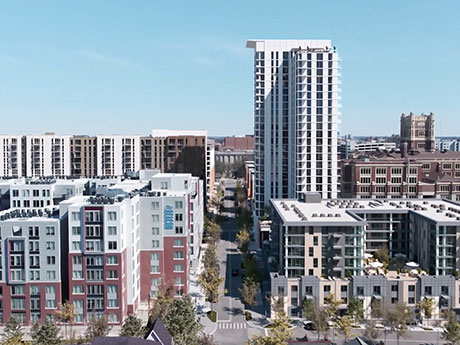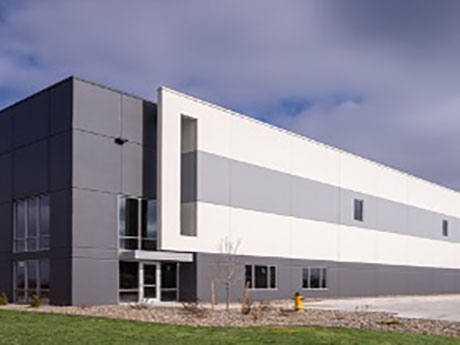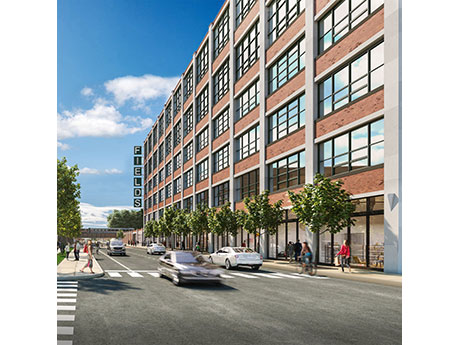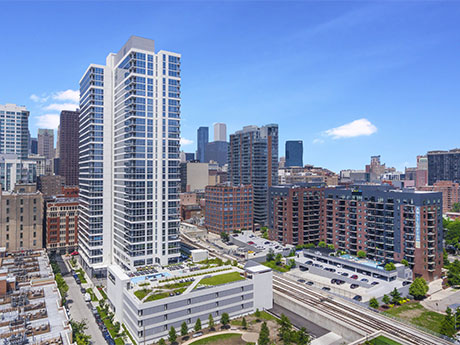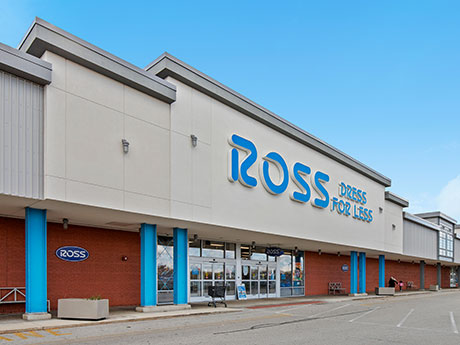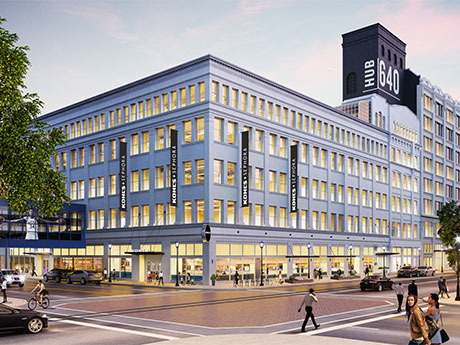By Scott Olson, Skogman Commercial Despite a derecho, a pandemic, inflation, supply chain issues and a possible recession, Cedar Rapids continues its rapid growth as evidenced by the ranking by “American Growth Project 2023” as a top 15 fastest-growing mid-size U.S. city. But, its other national rankings are just as impressive: • 23rd-Best Run City in U.S. (wallethub.com, 2023) • Top 100 Best Places to Live in America (Livability, 2023) • 23rd-Best Place to Raise a Family (wallethub.com, 2023) • 13th-Best City to Buy a House (niche.com, 2023) • Ranked No. 21 of Cities with Lowest Cost of Living (Business Insider, 2023) • A Cleanest U.S. City by Short-Term Particle Pollution (American Lung Association, 2023) • Two Nationally Ranked Medical Centers: St. Luke’s Hospital and Mercy Medical Center (PINC Al/Fortune and Newsweek, 2023) • Top 50 Best City for Jobs in America (wallethub.com, 2023) • No. 22 Safest City in America (wallethub.com, 2022) • Best Tasting Drinking Water in Iowa (Iowa Section, American Water Works 2022) In addition to these rankings, Cedar Rapids is also continuing to make major progress on recovery from previous national disasters: • 2008/2016 historic floods are resulting in the $750 million flood control system making …
Midwest Market Reports
By Anthony Sanna, Integra Realty Resources The commercial real estate (CRE) market is facing a time of uncertainty and anxiety as we move further into 2023. A variety of factors are contributing to investor sentiment being low, including the threat of higher interest rates impacting commercial loans, fears of a declining CRE market, and concerns about recessionary pressures, inflation and a liquidity crisis currently taking shape. The question on everyone’s mind is where values are going and what trends we can expect in the coming months. Signs of a softening market National data analytics firms are already reporting a 10 percent value decline across most asset classes, except for industrial real estate. While this indicates there is downward pressure on pricing, it’s important to remember that appraisal data is somewhat backward-looking and may lag behind current pricing trends. Additionally, tracking recent transactions from six to nine months ago may not represent the boots on the ground experience happening at this very moment. Admittedly, appraisers are rear-view mirror-focused (tracking transactions) while the actual market is windshield-focused (future transactions). Despite this, recent examples in daily work indicate a downward pricing trend. Recent purchase contracts have been re-traded and amended, often with lower …
By Anthony Armbruster, Colliers Although converting former office buildings to multifamily properties is by no means a new practice, conversions have been on the rise in recent years due to the changing work environment and office landscape. While the COVID-19 pandemic has started to fade away in many peoples’ minds, several of the changes in the work environment during that time have not. Many formerly in-office employees continue to work from home or have hybrid schedules post-pandemic. Additionally, tenants who are moving into new office spaces have shown a preference for smaller, more efficiently laid out, amenity-rich and suburban Class A office spaces. These changing consumer preferences have resulted in higher vacancies and fewer new tenants for older downtown office buildings than before the pandemic. Consequently, many of these older buildings are being converted into residential spaces, exemplifying the trend. An office building may be considered for a residential conversion when it is no longer economically feasible to continue running the building as such. However, not every office building at the end of its economically useful life is a suitable candidate for a residential conversion. Factors such as a building’s layout, location, age and cost of conversion play the most …
By Jeremy Spillman and Corey Sedrel, Capstone Commercial In a setting where I-80 and I-35 intersect to make up one of the busiest truck traffic intersections in the Midwest, Des Moines is well positioned to harness the power of manufacturing in Iowa to support several larger Midwest cities such as Chicago, Minneapolis, Kansas City, St. Louis and Omaha. As we see change in our global supply chains, manufacturers and distributors look to states like Iowa to support these changing environments where we see these organizations moving away from the just-in-time model to just-in-case. The transition to a just-in-case supply chain model began to form due to several supply chain-related issues we encountered during the pandemic. This led to higher demand for additional warehousing to be constructed. Availability of large cube warehousing had been historically tight in Iowa since 2012 where most years carried vacancy rates of 2.5 to 4.5 percent annually. During 2022, there was 2.97 million square feet of warehouse/distribution space delivered to meet the increase in demand of rising inventories. “From the construction standpoint, supply chain issues are subsiding, but there are still longer than normal lead times for certain trades and equipment. These lead times are still …
By Jaime Bertsche and Lara Keene, Mid-America Real Estate Positive signs for retail real estate abound across many Chicago neighborhoods and high streets, with physical stores demonstrating their necessity coming out of the pandemic. Both of us live and work in the city of Chicago, so it’s particularly heartening to see favorable trends and leasing activity throughout our city of neighborhoods. It may surprise some to know that Chicago has been No. 1 in corporate expansions for the last nine years, with 441 major business expansions and relocations in 2021. Chicago employment has grown by 75,000 since the start of 2022 and ranks third in the U.S., according to World Business Chicago. Google is investing in the city and purchased the 17-story, 1.2 million-square-foot Thompson Center in the Loop with plans to use the building as a second Chicago headquarters. Kellogg announced it will move a spinoff company to Chicago for a new headquarters in the city. Some of the economic changes we saw in the market in the second half of last year affected retailers’ expansion plans. Inflation and interest rates challenged retailers to maintain their customer base, keep their own costs in line, and adapt to higher …
By Mark Stern, JLL Chicago’s multifamily sector currently enjoys strong market fundamentals highlighted by healthy occupancy rates and continued rental rate growth. The current core apartment rents average over $4 per square foot, which is higher than previous peak pricing. After the pandemic, rental rates between late 2021 to 2022 recorded 10 to 15 percent growth, which is substantially ahead of the historical norms. Currently, the Chicago rental market is experiencing more stable rent growth in the 3 to 4 percent range. Chicago remains one of the most affordable major markets to rent an apartment when looking at the current average effective rents as a percentage of median household income. This affordability will allow owners to continue to push rental rates in the future. One of the major factors leading to strong operating fundamentals in the Chicago market is the lack of new supply. The supply in Chicago is currently 1 percent of the inventory, which is quite low in comparison to other markets where there could be as much as 10 to 12 percent of the inventory under construction. In the city, there are just over 7,000 units under construction slated for delivery between 2023 and 2024. The majority …
By Ted Branson, Landmark Commercial Real Estate There continues to be strong demand and a resulting shortage of industrial buildings in Wichita from 1,000 to 100,000 square feet for lease or for sale, not dissimilar from the fierce competition for housing, with prospects paying well above market rates just to keep from losing out “again” on an available property. With that, Wichita is seeing vacancies continue near 5 to 6 percent, an increase in average lease rates from $4 to $6 per square foot, and average sales prices increasing from $35 to $50 per square foot. New construction prices carry that considerably higher. That demand for space, and the increasing prices that prospects will pay, often leads to land sales and new construction. Many of the supply chain issues that caused construction to take up to two years have been improved or resolved, and several projects are underway. Developers have built several speculative warehouses, most notably in the new ICT21 Industrial Park, the former location of the Derby Oil refinery. Ron and Marty Cornejo did a masterful job of clearing the site of structural obstacles and rendering pollution issues innocuous, with Conco erecting three first-class, tilt-up concrete, high-bay warehouses, with …
By Adam Connor, Colliers When the pandemic hit in 2020, most of the media jumped to write articles about the downfall of retail properties and how shoppers were going to get all their goods flown from drones from their Amazon overlords. The reality is that every day, normal people shop at grocery stores, go work out at the gym, and buy lunch or dinner somewhere. Now that 2020 is far behind us, the 2023 retail landscape in the Milwaukee region looks much different. Most of the retail space, including the mid-box and big-box vacancies, have been backfilled and, as a result, owners saw healthy rent growth in their assets. With the lack of construction over the past five to seven years, retailers are now competing for high quality space and paying a premium in rent to be located there. With only 134,000 square feet under construction and a 12-month absorption of 660,000 square feet, quality space is in high demand. Asking rents are up 7 percent to $14.80 since the second quarter of 2020 and vacancy is down to 5 percent. Development The Milwaukee area has some large development projects that are underway, including Fiserv moving its corporate headquarters back …
By Tony Colvin and Michael Fitzgerald, Mid-America Real Estate In the absence of significant new construction, the evolution of the retail real estate market in Milwaukee is largely being driven by the conversion and demolition of existing spaces. Some prominent places are being reimagined in creative ways that often include multifamily and other uses in addition to retail. HUB640 in downtown Milwaukee is a perfect example. A historic building formerly occupied by a Boston Store, the property is being transformed by North Wells Capital and Urban Innovations Management. The new mixed-use project will feature Kohl’s as the retail anchor tenant, loft apartments and office space occupied by Fiserv’s corporate headquarters. Other corporate office users, including Milwaukee Tool and Northwestern Mutual, also are betting on the central business district (CBD), with Milwaukee Tool relocating upwards of 1,200 employees, and Northwestern Mutual redeveloping and enlarging its headquarters. At the same time, new multifamily high-rises are remaking the architecture of Milwaukee including the river and lakefronts. The 25-story Ascent opened last year, and 333 North Water (31 stories) and Couture (44 stories) are on the horizon. Additionally, Iron District MKE is an 11-acre mixed-use sports and entertainment development slated to be phased in …
By Eric Rose and Erick Tjarks, Cresa The Omaha office market proved to be somewhat insular from the effects of the many factors the real estate industry has experienced since 2020 (COVID-19, the hybrid work-from-home model, discussions of impending recession to name a few). Although down year-over-year, which given the recent interest rate hikes is expected, market sales volume remains above-average over the surveyed period going back to 2007. Though, this transaction volume dropped precipitously in the second half of 2022 and has continued to be slow in early 2023. However, the local market has seen pockets of increased activity, as Northwest Omaha saw heightened transactional volume, with Midtown Omaha, downtown Council Bluffs and suburban West Dodge following suit. As showcased above, market cap rates have largely accounted for interest rate hikes and are currently stable but subject to future interest rate increases. These statistics all point to a stable market, with fundamental performance on solid footing. However, it should be noted that, according to CoStar, 2022 is only the second year on record when demolitions outpaced gross deliveries, with only 93,000 square feet of net deliveries Omaha ranked in the bottom 10 of the top 60 office markets …


